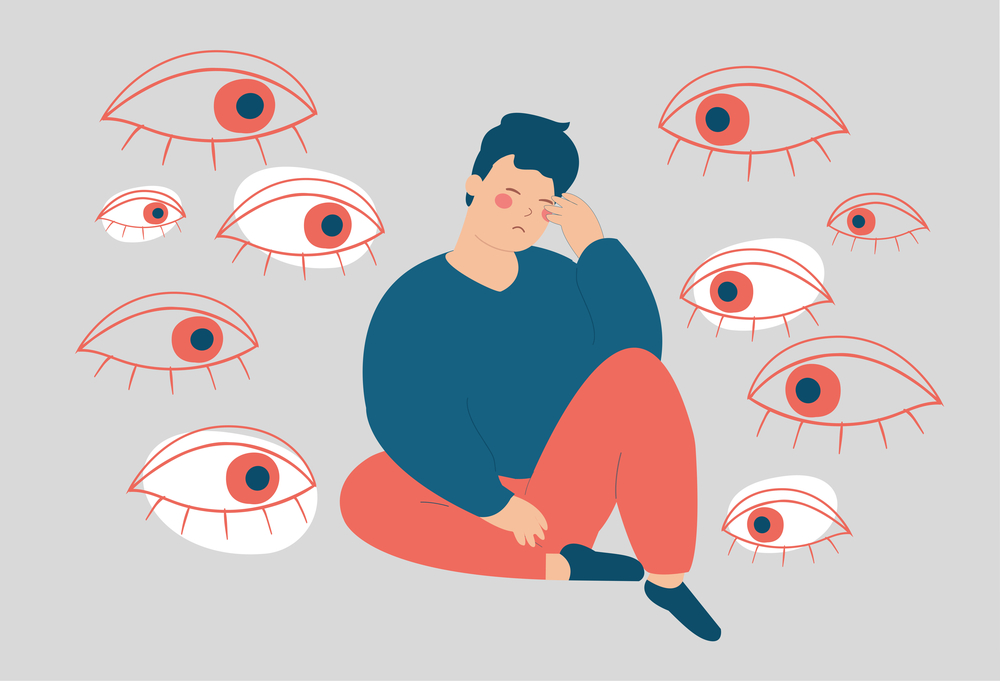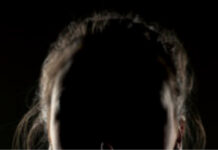A recent study indicates that conventional psychiatric frameworks might fall short in comprehending unusual perceptual experiences and thoughts (UPTBs) among young people.
Published in the Irish Journal of Psychological Medicine by researchers from the Royal College of Physicians of Ireland, the study underscores the necessity for a more nuanced comprehension of phenomena often labeled as psychotic experiences, particularly when they manifest outside clinical settings.
Led by Helen Coughlan, the researchers sought to describe the characteristics of UPTBs in young adolescents and examine how these individuals interpret their experiences. The study identifies three primary ways young people make sense of their UPTBs: by normalizing them, externalizing them, and distancing them from psychiatric explanations. The authors state:
“Findings from this study offer new insights into the phenomenological qualities and characteristics of UPTBs in young adolescents. They also reveal that early adolescents may not make sense of their experiences within a psychiatric framework. These findings highlight the need to develop a more phenomenologically sensitive and nuanced approach to studying UPTBs in young people.”
The researchers call for an anthropologically-informed, culturally sensitive approach to understanding these experiences.
 The study aimed to describe the lived experiences of UPTBs among young adolescents and investigate their interpretations. To achieve this, data was drawn from the Adolescent Brain Development study, a longitudinal research project in Ireland. Initially, 211 participants were interviewed about UPTBs. Three researchers independently reviewed these interviews. After a consensus meeting, 53 participants were determined to meet the criteria for UPTBs, forming the sample for the current study.
The study aimed to describe the lived experiences of UPTBs among young adolescents and investigate their interpretations. To achieve this, data was drawn from the Adolescent Brain Development study, a longitudinal research project in Ireland. Initially, 211 participants were interviewed about UPTBs. Three researchers independently reviewed these interviews. After a consensus meeting, 53 participants were determined to meet the criteria for UPTBs, forming the sample for the current study.
Clinical interview notes from these 53 participants were categorized into four types: auditory verbal phenomena (hearing voices), auditory non-verbal phenomena (hearing other sounds), non-auditory perceptual phenomena (experiencing sights, smells, and tactile sensations), and unusual thoughts and beliefs. The researchers then discerned themes around how participants understood their UPTBs.
Out of 53 participants, 48 reported hearing voices. For 14, voice hearing was the only unusual perception noted. This experience was relatively rare; one-third of those reporting it had only heard voices on a few occasions. Most commonly, participants reported hearing multiple voices, often of adult timbre, rather than a single voice or childlike voices. Some even described voices that advised against dangerous actions.
The study identified three overlapping themes concerning how participants interpreted their UPTBs: normalizing, externalizing, and distancing from psychiatric narratives. ‘Normalizing’ was the most common approach, where participants viewed their experiences as figments of imagination, memories, or mind tricks. Almost three-quarters of participants used this explanation for at least one UPTB, and for about 40%, it was the sole explanation provided.
‘Externalizing’ was also prevalent, with participants attributing their experiences to external entities like gods, devils, ghosts, or aliens. Ghosts were the most commonly cited external force. While over half endorsed paranormal beliefs, 40% specifically attributed their UPTBs to non-human external forces. Although most were open to non-paranormal explanations, a minority were not. About one-third stated that friends and family shared their paranormal beliefs.
If participants’ explanations diverged from psychiatric theories, researchers coded this as ‘distancing.’ Nearly every participant exhibited some level of distancing, though only two explicitly stated it. The authors suggest that this may be because young adolescents have limited exposure to psychiatric concepts.
An additional theme of ‘uncertainty’ was found in many participants’ explanations. About 66% were unsure about the origins of their UPTBs, leading to a tentative understanding of their experiences.
The study had limitations, including the use of interview notes rather than audio recordings and a small, localized sample size, which restricts its broader applicability. The participants used were all young adolescents recruited to a research study in Ireland, significantly limiting generalizability to other populations. The authors conclude:
“We propose that a more nuanced understanding of the significance of different dimensions of early UPTB experiences may yield greater insights into how benign or clinically relevant differing phenomena may be, particularly in the context of high levels of paranormal beliefs underlying experiences, which have previously been found not to have strong associations with either psychopathology or impaired functioning.”
Prior research has shown that mental health professionals and patients often disagree about symptom causes. This aligns with the “distancing” theme identified here. Studies have recommended that effective treatment of psychosis in Pakistan requires understanding local supernatural beliefs. Given the paranormal explanations endorsed in this study, a similar understanding may be essential for treating adolescents in Ireland.
****
Coughlan, H., Healy, C., Humphries, N., Clarke, M., Kelleher, I., & Cannon, M. (2020). Phenomenological characteristics and explanations of unusual perceptual experiences, thoughts and beliefs in a population sample of early adolescents. Irish Journal of Psychological Medicine, 39(2), 173–184. https://doi.org/10.1017/ipm.2020.26 (Link)















As a Christian American who had a dream about what being ‘moved by the Holy Spirit’ meant, misdiagnosed as “psychotic.” Resulting in a hypocritically claimed, and what turned out to be child abuse covering up, “holistic Christian talk therapist,” blaspheming the Holy Spirit in her medical records – which is the one and only “unforgivable sin” in the entire Holy Bible.
And as one who now knows most everything the psychologic and psychiatric industries believe in – their DSM “bible” – is “bullshit” and “invalid.”
https://www.wired.com/2010/12/ff-dsmv/
https://psychrights.org/2013/130429NIMHTransformingDiagnosis.htm
I do agree, the psychiatric and psychological industries have lost their minds – with their undeserved and unchecked power – and gone off blaspheming anyone who has belief in the Spiritual realm, or the Holy Spirit, or God … or “paranormal beliefs” or “supernatural beliefs” or “unusual perceptual experiences and thoughts (UPTBs),” or “psychosis,” or whatever else the material world only believing, DSM “bible” thumping industries, want to call belief in God, the Holy Spirit, and the Spiritual realm.
People should be able to believe in the Triune God and the Spiritual realm, in all countries, including the US, Holy Spirit blaspheming, DSM deluded, psychologic and psychiatric industries. Your DSM “bible” was debunked over a decade ago … wake up! There’s more to being a human, than just worshipping the Ponzi scheme of a monetary system that we call the “almighty dollar.” God is the “Almighty,” not you, or the US dollar you worship.
And do tell, exactly when did belief in the Triune God become an “unusual” belief in America, systemic child abuse covering up, Holy Spirit blaspheming, psychological and psychiatric industries?
https://www.indybay.org/newsitems/2019/01/23/18820633.php?fbclid=IwAR2-cgZPcEvbz7yFqMuUwneIuaqGleGiOzackY4N2sPeVXolwmEga5iKxdo
https://www.madinamerica.com/2016/04/heal-for-life/
https://www.psychologytoday.com/us/blog/your-child-does-not-have-bipolar-disorder/201402/dsm-5-and-child-neglect-and-abuse-1
Report comment
I love this statement by those who did the study. “The authors suggest that this may be because young adolescents have limited exposure to psychiatric concepts.”
If those young people had more. exposure to psychiatric concepts they would immediately place themselves in a psychiatric hospital and begin taking anti psychotics, anti depressants lithium and the cascade of drugs to counter the side affects.
They just remain uninformed…
Report comment
There was a recent review at MIA that self-labeling in texan teenagers is actually harmfull: teenagers self-labeled as mentally disordered or ill actually suffer more than teenagers who do not do that.
Report comment
1.- I have always wondered when people say, on their own, no cajoling nor manipulation, they hear voices what do they mean?
A) They hear voices in their heads? i.e. not outside, like a true auditory hallucination. Or do they really hear “voices” outside in the world?.
2.- Do people realize that no matter what people think they perceive, given the method of assesing “auditory hallucinations” eventually it will be influenced heavily by the person doing the assessment? And persons doing those kind of assessments are trained to answer the same thing on the same “presentation”? Which might sound like a good thing, but to me it is not.
3.- The patient’s narrative according to the psych methods will be sumarized in a quote that pretends to convey what the “patient” is feeling. But, like hot/cold readers in the paranormal it’s chosen or driven to fit the expectations of the interrogator, i.e. the psychologist or psychiatrist.
===== That is, psychologists and psychiatrists will ignore to a degree what the patient is saying and will approximate to a phrasing that fits the expectations of persons trained in such cockamamie. The patient might make 5 statements about their “voices” and the interrogator will write the one that fits it’s expectation… or repeat asking questions until it fits a preagreed narrative, as per the psych training. Far from objective interrogation, but very biased at least by expectations…
4.- I can’t imagine how auditory hallucinations presented themselves in preverbal hominids. If auditory hallucinations of the verbal kind are genetic, our preverbal ancestors had them how?.
I got lost on the percentages, it’s not clear to me if it is from those who have “unusual” perceptive phenomena, or the total…
But!, if im reading correctly 6.64% (14 out 211) of adolescents actually ONLY “hear” voices, that presumably are not there. So, not that uncommon and probably not predictive of schizophrenia, given that it’s positive predictive value would be 1% divided by 6.64%, if I’m guessing correctly, assuming of course that all people to be diagnosed thus actually are among the 6.64%, which is not a given… so the positive predictive value could be even less…
Report comment
This study started from “an initial survey of 1131 adolescents” of which “…211 attended for detailed clinical interview and cognitive assessment.” and pressumably whom as “Participants were compensated for their time with a gift voucher.”
So… it does not report the results of the “Adolescent Psychotic Symptoms Screener” in the 1131 adolescents. hum?, weird!, that sounded interesting…
It seems dishonest by not comparing the frequencies from both the “Strengths and Difficulties Questionnaire” and the “Adolescent Psychotic Symptoms Screener” between those that, pressumably, got the gift voucher and those that did not, to try to assess bias, so this a poor study, and probably as I stated at least dishonest. That is: how the 1131 minus 211, were different from the 211…
It is a study done of 53 out of 211 out of 1131 without establishing how the 211 are different from 1131 other than they didn’t, presumably, got a voucher. Imagine that the DOUBLE percentage of teenagers reported hearing voices among de 1131 than among the 211, does happen…
And on top of that it starts by narrating the less than honorable, according to sociologists/historians, not explictly, of “psychiatry”: Adolf Meyer. Shame, shame, shame… shame… this Adolf fellow was a crook, IMO…
tst, tst.. Bad science. And the research protocol, presumably, was approved by!: “… the Research Ethics Committees of Beaumont Hospital Dublin and the Royal College of Surgeons in Ireland.” But I guess it’s not an ethical flaw to do poor bias control?!, after all “participants” got a gift voucher and I got a laugh, no moral harm done…
Oh! Oh! Oh! Apparently the clinical interview was not blind, the somehow, interviewers/reviewers knew these kids came from “normal”, somehow, population… these teenagers are the apples that apparently didn’t fell from/into the psychiatric shakedown out of the tree of “Adolescent Brain Development”, presumably normal…
Report comment
And finally, hopefully my last caveat: This study is from answers from the MEMORY of teenagers during a clinical non-blinded, apparently, interview. So, not a real thing…
I imagine if some teenagers actually mix their dreamy, really dreamy not awake dreamy, life with their real, awake, life, and this study is picking out on that, and not on hallucinatory, inner dialog, or cultural “voices in your head” phenomena, an answer phenomena not a sensation/perception/recall phenomena.
You know, close to 7% percent experiencing something does not sound to me that “unusual”. I’ve never been to the MoMa of New York, and I would not call those experiencers unusual… nor teenagers in a prom doing some other stuff… etc.
By that terminology religions with less than 1% representation are way unusual… Seven percenters are unusual, of course…
And just to be clear, if a teenager tells me he or she, whatever, saw Satan, I would believe he or she saw it, what I am questioning is the interview process and ALL it involves, not the honesty, perceptions or memory of teenagers. Extremely pedantic: How could I? this study makes no difference, literaly…
Report comment